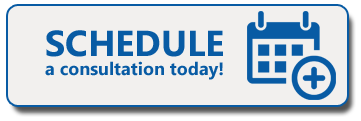
A Roth Solo 401(k) retirement account allows smart business owners to increase their tax-free retirement income. Who doesn’t want more tax-free income in retirement? If your spouse is involved, they may be able to contribute as well, creating even more tax-free retirement income for your family. The Roth Solo 401(k) is a relatively new type of account, and not all financial advisors are able or willing to offer these retirement plans.
Keep reading as we share some benefits and drawbacks of a Roth Solo 401(k).
By David Rae Certified Financial Planner™, Accredited Investment Fiduciary™
What Is A Roth Solo 401(k)
A Roth Solo 401(k) is a retirement account for small business owners funded with after-tax contributions. You might be wondering: Why would I contribute to a 401(k) if I don’t get a tax deduction? Well, with a Roth Solo 401(k), your contributions can be invested, grow tax-free, and eventually be withdrawn tax-free. You may pay more taxes today to decrease your tax burden over your lifetime.
Contribution limits are the same for the employee portion, whether you use a Roth Solo 401(k) or a traditional Solo 401(k). In 2025, you can contribute $23,500 to the Roth portion of your solo 401(k). If you are 50 or older, you can make an additional $7,500 catch-up contribution ($11,250 for those ages 60-63). With employer contributions, you can get a whopping $70,000 into your 401(k) in 2025. Again, plus your allowable catch-up contribution if you are 50 or older.
Remember that employer contributions must be made pre-tax to a traditional Solo 401(k). Therefore, withdrawals from this portion of your portfolio will be taxable in retirement. But you do save on taxes today.
You may be able to contribute more to your Solo 401(k) than other types of self-employed retirement accounts. In fact, you can contribute up to 100% of your salary to the employee portion of your Solo 401(k). For example, if you had a new small business and made $23,500, you could still put $23,500 into your Roth Solo 401(k). Obviously, you need money to live, so this strategy works best for two-income households or people with a side hustle.

Who Benefits The Most From A Roth Solo 401(k)?
Like pretty much every financial decision, there are pros and cons. Saving for retirement is good regardless of whether you use a traditional 401(k) or a Roth 401(k). There are five main scenarios when a business owner should really consider a Roth Solo 401(k).
1. You Expect Your Income To Grow Substantially In The Future
As your income grows, you will find yourself in higher and higher tax brackets. Contributing now will allow you to manage your taxes more efficiently (missing out on less-valuable tax deductions today).
2. You Want To Maximize Tax-Free Income In Retirement
If you are looking for the maximum amount of tax-free retirement income, the Roth Solo 401(k) is one of your best options. You won’t always be self-employed or have a Roth option. The more you contribute, the more tax-free income you will eventually have in retirement.
Having a big income in retirement is great. Having a big tax-free income stream in retirement is absolutely fabulous.
3. You Want Tax Diversity On Your Retirement Income
Having funds in both pre-tax and after-tax accounts will allow you to minimize taxes in retirement. If all of your funds are in a taxable account when you make withdrawals (think traditional IRA or 401(k)), your tax-planning strategies in retirement will be limited. A combination of traditional and Roth plans will allow you to be more strategic with your retirement income and pay the least taxes over your lifetime.
4. You Are A Younger Investor
The younger you are, the more beneficial a Roth strategy will be. Get started early and let compounding interest work its magic.
5. You Have An Abnormally Low-Income Year
I work with many business owners who usually are in the top tax brackets (which are especially painful here in California— topping out above 50% when combining state and federal rates). Several of their businesses were essentially shut down during COVID. Usually, we would be scrambling to find every last tax deduction. However, we didn’t have that problem during 2020, and using a Roth Solo 401(k) became much more appealing to them.
More Small Business Retirement Plans To Consider

SEP-IRA
A SEP-IRA is one of the easiest small business retirement accounts to set up. But you may find your contributions are limited. In 2025, you can potentially contribute $70,000, or up to 25% of your employee compensation—whichever is less.
No catch-up contributions are allowed with a SEP-IRA for business owners who are 50 or older. Also, there is a SEP Roth IRA option.
Cash Balance Pension Plan For More Retirement Income And Tax Savings
If you are doing well on the income side and already maxing out your Solo 401(k), your next step would be to add a Cash Balance Pension Plan. In most cases, you would combine a Cash Balance Plan with a Solo 401(k).
Your Cash Balance Plan can be designed to replace over $345,000 of income in 2025. The closer you are to retirement, the larger your allowable contributions will likely be. I have several clients who are able to contribute more than $200,000 to these plans on their behalf. These numbers can potentially double if your spouse also works in the business.
There is no Roth Cash Balance Plan option.

Roth IRA Or Traditional IRA
A Roth IRA or Traditional IRA may be a good place to begin if you are just getting started. This is assuming you meet the income requirements to be able to contribute. If you make too much money, you won’t be able to contribute to a Roth IRA. If your income is above $165,000 (single) or $246,000 (married filing jointly) in 2025, you will see your Roth IRA contributions limits, or even eliminated completely. The Roth IRA Contribution limit is still $7000 2025.

For extra credit, consider making after-tax contributions to your Solo 401(k) to then implement the Mega Backdoor Roth Strategy to maximize your retirement assets that will be able to be turned into tax-free retirement income.
DAVID RAE, CFP®, AIF® is a Los Angeles-based financial planner with DRM Wealth Management, a regular contributor to Advocate Magazine, Huffington Post, and Forbes, not to mention numerous TV appearances. He helps smart people across the USA get on track for their financial goals. For more information, visit his website at www.davidraefp.com









